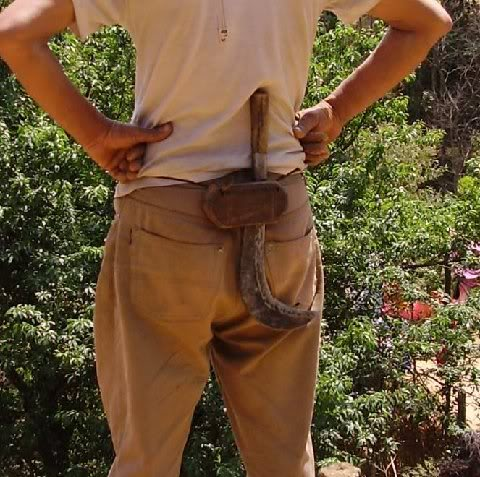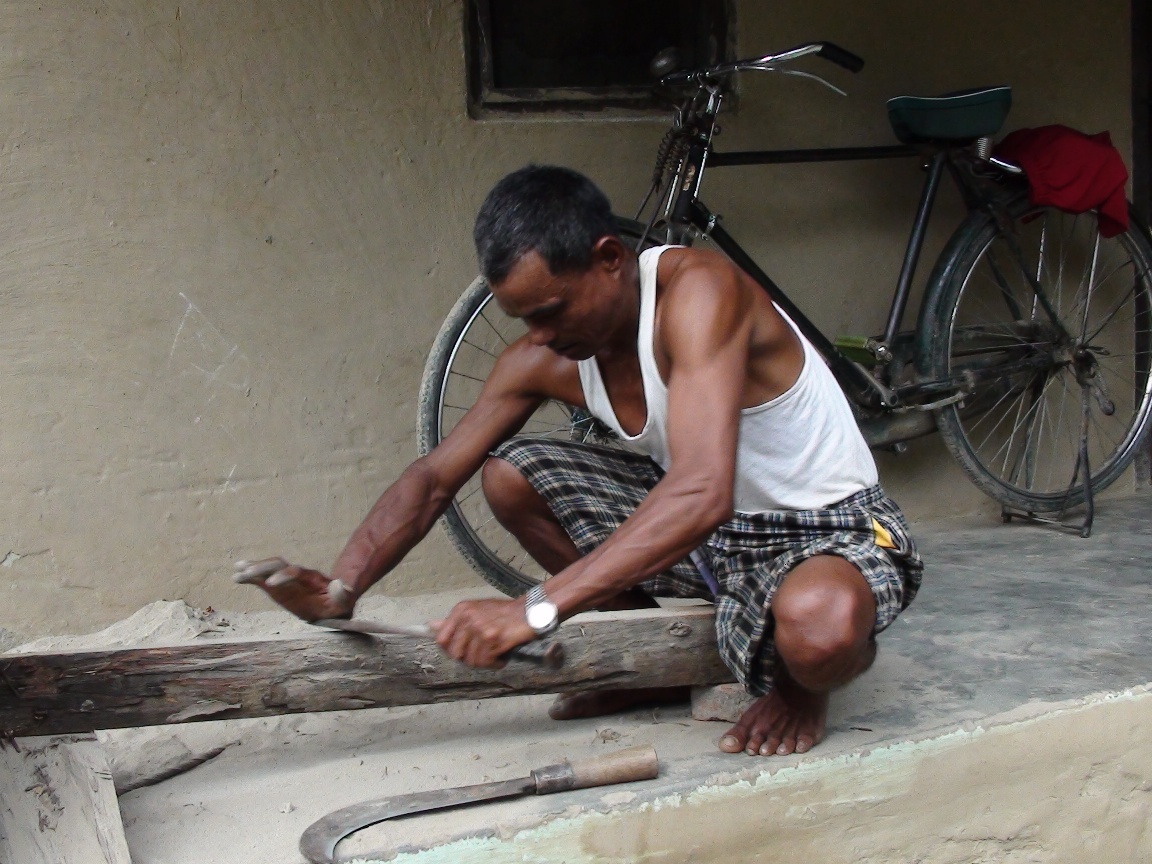Quote:
|
Originally Posted by Billman
Thanks for your response Spiral - khukri are not my area of expertise, so I always bow to greater knowledge - but my experience of billhooks from many lands has shown me nothing is set in stone, and there are always variations and exceptions to rules.....
|
No problem Billman,I am just a student of khukri, but I know what I know, & while I certanly agree vaiations & exceptions are always possible, I was merly pointing out the that the ferrule on this was clearly a replacment, not original as you stated. After all the man who made that handle & bolster was skilled, the man who fitted that miss sized ferrule & rivet clearly wasnt.
Quote:
|
Originally Posted by Billman
Since posting the previous reply I have found a little more on the Nepaese sickle, or aansi. The same name refers to both a light small rice sickle and also a heavier billhook for wood. It is a more common, and more widespread, tool in Nepal than the celberated khukri - and there are many regional variations........
|
I like that!

Funny that your research includes feature the first picture, One I took 6 years ago during a visit to Nepal to research kukri, kora & other bladed items, some of which I also watched bieng made. There are many variations both in the design of all these tools & also thier names, Hansiya is another common name for Sickle also.
in the last decade they are probably seen in Nepal more than kukri as since the most violent part of the recent insurgency/revolution kukri were banned from carry in many areas. Traditionaly though many poor housholds would only own one tool & it was the kukri which will do the job of a sickle or billhook after all.
Quote:
|
Originally Posted by Billman
I would argue that a capped ferrule is not the same as a bolster - the bolster is integral with the blade, the ferrule - capped or open - is part of the handle, to prevent it splitting when pressure is put on the tang.. The bolster acts as a shoulder to stop the handle progressing up the blade - on the sickles, a shoulder is sometimes formed by bending the blade at right angles..
|
Interesting argument but mistaken in many areas I feel..
1, ferrules & bolsters are both used to strengthen the handle/hilt, although the bolster also protects the end grain & provides a smooth junction between hilt & blade.
2, Some ww2 era kukri did have an integral welded bolster together with a full width tang double riveted, but this is unusual most bolsters are a rolled single piece of sheet metal folded & filed to form the bolster.
3, partial & rat tail tangs on kuhukri a built with a stepped shoulder so it is impossible for the hilt to proggress up the blade.After all The word bolster mans to add support & strength, not to prevent movement.
4, Also as an aside both this hook. {from my photo....}

& this one, are actualy capped ferrules{ Otherwise known as bolsters.}

Possibly some of the others are as well.
I suggest you buy a few kukri & hansiya & dismantle them where neccasary if you realy want to see what kukri tangs & bolsters are like. Its an intersting study I am sure you would enjoy. I cartanly have & Ive only ever owned around 700 kukri although Ive seen & handled thousands more off course. Mostly from around c.1800 to 1945 both military,traditional & presentation pieces.
Spiral